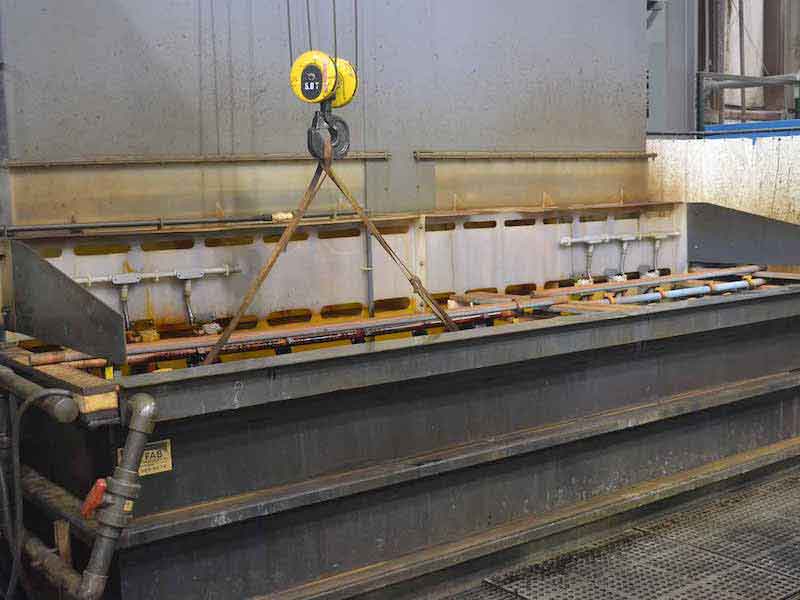For nearly a century, chrome plating has served as the simplest and most cost-effective method of improving the surface characteristics (i.e., hardness, wear, and corrosion resistance) of common ferrous and non-ferrous metals used in industry and manufacturing.
 Bill CorzineCommercial electrodeposition of metallic chromium coatings onto the surfaces of these metals began in the late 1920's1 and has since become the standard for functional surface improvements across the spectrum.
Bill CorzineCommercial electrodeposition of metallic chromium coatings onto the surfaces of these metals began in the late 1920's1 and has since become the standard for functional surface improvements across the spectrum.
Yet, like so many relatively simple chemical-based processes, chrome plating has, in the 21st century, come under fire from health and environmental groups, and, as is so often the case, many are calling for a complete ban on the processes.
It can be argued that the primary rationale for discontinuing the use of chromium coatings lies in the lack of understanding of the chemistry of chromium and chromium compounds. For example, Europe's ban on chromates began with the realization that chromate conversion coatings, once commonly used by the fastener industry, remained slightly soluble in water and, therefore, could be leached into the soil, especially after disposal. As a result, true chromate (Croi-) coatings have been banned in many countries. Chromates are salts of chromium trioxide, that is, chromic acid, which is the primary component of conventional chrome plating baths. However, the end product of chrome plating, chromium metal, is not chromate and, therefore, not soluble in water nor reactive in the air.2 Further, since the typically hazardous chromium compounds are those where chromium is in the hexavalent state and zero-valent chromium metal cannot be converted (oxidized) to hexavalent under conditions normally found in nature, the metal is essentially harmless to life.
Nevertheless, the process solutions from which metallic chromium is deposited are predominantly solutions of chromic acid. Since the chromium in chromic acid is hexavalent in form, it can be a health hazard if handled incorrectly; hence the rather high number of regulations that have been created with regard to the use, handling, storage, and transportation of these materials. And, as is typical with substances that are determined to be health hazards, a number of misconceptions about exposure continue to exist, even within the industry. For example, in the U.S., OSHA demands the installation of fume controls for all plating baths to protect workers from inhaling chromate fumes. Yet, while even OSHA admits that no chromate is expelled into the air except when an electric current is applied (or under conditions of unusually rigorous agitation), many continue to believe that chromium literally evaporates from the tank. In reality, as long as fume suppression or scrubbers are properly used and maintained, practically no chromium is found in the surrounding air.
Likewise, from an environmental standpoint, hexavalent chromium can be chemically reduced to the relatively non-hazardous trivalent state and released with wastewater to POTWs with little concern (other than regular monitoring). Alternatively, spent chromium solutions can be shipped to facilities that provide the service of converting hexavalent chromium to trivalent form for release or recycling. The result of these treatment processes is that plating from chromic acid solutions, done properly, is no more hazardous to health or the environment than other chemical processes, many of which require similar processes or practices to minimize inherent hazards. Imagine, for example, eliminating petroleum-based products because of their inherent toxicity and flammability.
The point, then, is that proper methods of handling chromic acid processes allow their use with minimal danger to human health or the environment. The end results are the continued availability of products that, to date, are very difficult and expensive to replace and the continued presence of an industry that, as is the case with most industries, consists of ethically minded people providing a product for the good of the economy.
References
- Dubpernell, George. "Chromium." Modem Electroplating, 3rd ed., Lowenheim, F. A., ed. WileyInterscience, 1974, p. 87.
- Chromium. The Merck Index: an Encyclopedia of Chemicals, Drugs, and Biologicals, 11th ed., Merck & Co., 1989, p. 346.
Bill Corzine was Director of the Corporate Laboratory for the Armoloy Corporation in DeKalb, IL, and is now retired. He holds a B.S. degree in chemistry from Knox College, Galesburg, IL. He was a member of the AESF Rockford Branch for many years. He was also a member of the American Chemical Society. This paper was originally published in 2004. Visit www.armoloy.com



































